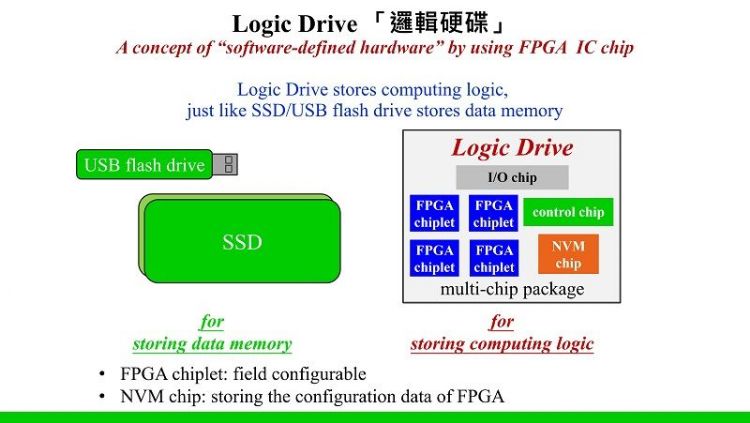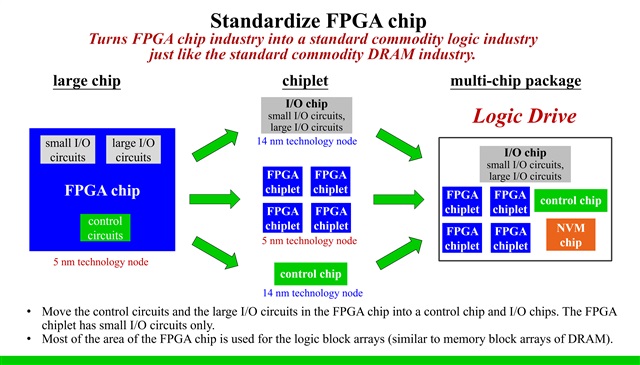Dr. Lin Mou-Shiung, Chairman of iCometrue Company, Ltd., was interviewed by the DIGITIMES. The exclusive interview is featured in the SEMICON TAIWAN 2023 Semiconductor Exhibition Special Edition of the Electronic Times, published on September 6, 2023. For the full interview content and DIGITIMES news link, please refer to the following.
Dr. Lin Mou-Shiung, DIGITIMES Photography
In the midst of semiconductor, automation equipment, and material companies at SEMICON TAIWAN, iCometrue stands out with its unique business model.
iCometrue was founded by Dr. M. S. Lin, who is an inventor and the current chairman of the company. He is currently also a member of Harvard University's Global Advisory Council as well as a member of Dean's Advisory Cabinet under the School of Engineering and Applied Sciences. He has four decades of experience in the semiconductor industry. Lin said that primary objective of participating in SEMICON TAIWAN 2023 is to find partners for co-development to lead to production of Logic Drive, a disruptive device invented by iCometrue.
Alternatively, the company is looking for opportunity for patent licensing, finding possible manufacturers that may be interested in developing and producing Logic Drive.
The Logic Drive Aims to Create a Public Innovation Platform for IC Designers Using Technology Nodes More Advanced Than 10 Nanometers
Logic Drive is an innovative term to many people in the industry. Lin said that as the technology of the semiconductor IC chip continues to advance, the cost of developing a chip below the 5nm technology node would easily surpass hundreds of millions of dollars. The cost presents a huge barrier to chip innovation. If this barrier could not be surmounted, chip designers would only flock to large semiconductor companies, thus, missing public talent pools and making revolutionary breakthroughs of the overall semiconductor industry even more difficult.
Lin also pointed out that with the 10nm technology node, Field Programmable Gate Array (FPGA) performance in some applications will be able to complement or even contend against the popular GPU — especially in networking and AI inference. With the inherent programmability of FPGA, developers will have flexibility to develop a variety of applications by modifying the configuration, which then alters the circuitry of FPGA chip, an impossibility for existing ASIC and CPU/GPU chips.
Lin even likens FPGAs to a modern Leonardo da Vinci, a Renaissance man who made great contributions as a painter and musician, an anatomist and physiologist; a geometer and a civil engineer; a skilled astronomer, meteorologist, geologist, optical scientist, mechanic, and a biologist familiar with animals and plants.
Inspired by the potential of FPGAs, Lin proposed a totally new idea: Logic Drive: Standardize the FPGA chip manufactured by the technology more advanced than 10nm technology node, pair it with a non-volatile memory (NVM) chip to store the FPGA configuration, and then package them together using multi-chip packaging technology. The result is a product similar to a Solid-State Drive or Solid-State Disk (SSD), with the only difference being that SSD is for storing data memory, while Logic Drive is for storing computing logic. An innovative IC designer may implement his innovations cost-effectively by programming his innovation into Logic Drive, put his own logo on a Logic Drive, and sell it as an ASIC chip.
What does standardizing FPGA chip mean? It means that only the programmable circuits of the FPGA is retained, while the I/O circuits and control circuits are removed from the FPGA chip to form the I/O chips and control chip in the Logic Drive. That way, the standardized FPGA chip becomes a commodity product and is easier and much less costly to mass-produce.
Lin further mentioned that adopting one or even multiple FPGA chips in a multi-chip package is a quite flexible method. In other words, the Logic Drive can be customized with different quantities of standardized FPGA chip, all depending on computing demand.
A Public Innovation Platform for Conquering Present Challenges
Lin hopes to use the realization of Logic Drive to create a public innovation platform. So that, through Logic Drive, the 99% of the common public can also participate in cutting-edge technology available to the wealthy 1%. Moreover, Logic Drive is a re-useable product, contributing to environmental sustainability. Based on Lin's observations over the past few years, iCometrue has gradually been able to search out market demand, and he also believes that such a model has a great chance of success. That is why the company hopes to seek partners at SEMICON TAIWAN. In last seven years, iCometrue has intensively detailed the roadmap to Logic Drive, proposing methods to standardize the FPGA chiplets for cost reduction and inventing advanced multi-chip packaging technology for packaging Logic Drive. As now, iCometrue has been awarded 36 US patents, with many more pending.
Realizing the concept of Logic Drive still presents some difficulties, such as the willingness of FPGA manufacturers to invest in this field so that FPGAs can be standardized and mass-produced. Another difficulty, in terms of development tools, is whether there is a more friendly development interface (such as NVIDIA's CUDA) that the market can use. But Lin also revealed that there are already methods to overcome these obstacles and realize Logic Drive, all without much difficulty. iCometrue will use multiple channels and business models to promote Logic Drive, and continue to develop multi-chip packaging technology patents for Logic Drive.
A New Moore's Law: The Result of Multi-Chip Packaging Technology
Lin has years of research and observation of multi-chip packaging technology, and he proposes: "Moore's Law of Chip Package." Moore's Law of chip states that the number of transistors per unit area doubles every 18–24 months. While the chip packaging technology was once considered as "non-Moore's Law", Dr. Lin proposes that the chip packaging technology will also start to undergo a similar trend of size miniaturization, following the well-known Moore's Law of chip. This implies that every 18-24 months, the number of transistors within a unit volume of chip package will double. When combining with Moore's Law of chip, the number of transistors in the multi-chip package will double sooner in every 9–12 months. The Moore's Law of chip now faces challenges related to physical limitations and escalating costs, and gradually slows down. As a result, the miniaturization journey is turning towards the chip packaging technology. In the future, the chip packaging technology is anticipated to progressively take the lead and continue the Moore's Law.
Finally, it is worth mentioning that Lin has over 40 years of industry experience, having worked at IBM, AT&T Bell Laboratories, and TSMC, and founded Megic Technologies (which became part of Chipbond) and Megica (which was acquired by a leading US semiconductor company). He has more than 300 US patents to his name. Encouraged by several top scientists, he distilled his forty years of experience into a book, Moore's Journey. The book was published at the end of August, and covers core concepts of science and engineering intermingled with personal stories and observations. Lin eloquently shares his deep understanding of physics and philosophy in this exploration of the past and present of semiconductors. The book, to be exhibited at SEMICON TAIWAN this year, also contains a more fleshed-out explanation of Logic Drive and Moore's Law of Chip Package. Anyone interested is welcome to come and browse.

Logic Drives store computing logic, just like solid state drives store data memory

In a standardized FPGA chip, most of its area is occupied by regular logic block arrays, just like memory block arrays in the DRAM chip

Dr. Lin proposed Moore's Law for chip packaging based on his decades of research and observation of multi-chip packaging technology
News Link: Link